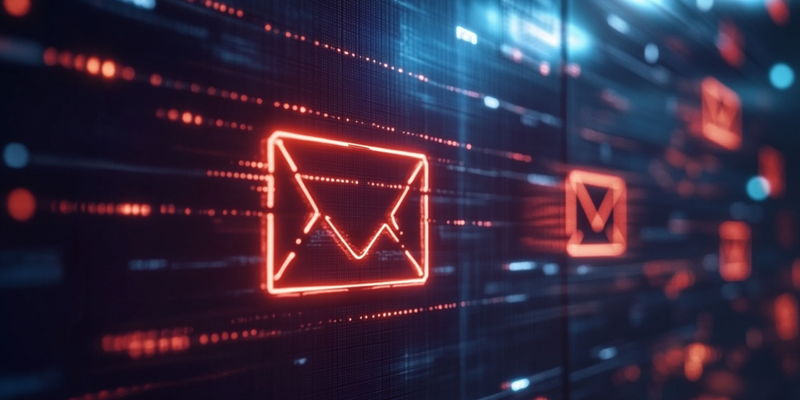Email security breaches are an escalating threat to critical infrastructure (CI) organizations. Here we delve into the nature of these threats, the rising trends, and the necessary measures to protect critical infrastructure.
Prevalence of Email Security Breaches
High Incidence of Breaches
Over the past year, 80% of CI organizations have experienced at least one email-related security breach. This concerning statistic highlights the prevalence of email as the primary vector for cyber threats. Phishing attacks, malicious links, and malware-laden attachments dominate the landscape, with phishing particularly leading to compromised credentials. This scenario is alarmingly common, illustrating the critical need for robust email security measures.
Despite facing significant threats, many CI organizations underestimate the risks associated with email. More than half of the surveyed organizations assumed that their emails posed no significant threat. This underestimation leads to insufficient security protocols, leaving organizations vulnerable to increasingly sophisticated email-based attacks.
Organizational Gaps in Perception and Preparedness
A gap exists between organizational awareness and the actual threat landscape. About 63.3% of CI organizations admitted that their email security needs substantial improvement. However, 48% of respondents expressed a lack of confidence in their existing email defenses. This disparity underscores the need for a wake-up call within the industry, pushing for more proactive and fortified security measures to combat email threats effectively.
The integration of IT and Operational Technology (OT) networks further exacerbates the risks. Traditionally, OT networks were isolated, but digital transformation has led to more interconnected systems, increasing vulnerability. A successful breach in IT can now potentially cascade into OT networks, complicating the security landscape and heightening the potential damage.
Types of Email Threats
Phishing Attacks: The Persistent Menace
Phishing attacks are the most prevalent form of email threat, often leading to compromised credentials. These deceptive emails trick recipients into divulging sensitive information or downloading malicious software. The sophistication of phishing attempts has evolved, making it increasingly difficult for employees to recognize and avoid them.
Organizations must prioritize employee training to enhance vigilance against phishing emails. Educating staff about recognizing common phishing techniques and signs can significantly reduce the risk of successful phishing attacks. Continuous awareness campaigns and simulated phishing exercises can reinforce these lessons and strengthen an organization’s overall security posture.
Malware and Malicious Links
Malware and malicious links sent via email pose significant threats. These emails often harbor dangerous payloads designed to infiltrate systems and steal sensitive data or disrupt operations. Attachment-based malware is particularly insidious, as it can bypass standard security measures and wreak havoc once it infiltrates a system.
To combat these threats, CI organizations need to implement advanced email filtering systems that detect and neutralize malicious content. Layered security solutions, including sandboxing and real-time threat intelligence, can provide robust defense mechanisms against these sophisticated attacks.
Risks of IT and OT Convergence
Increasing Linkage Between IT and OT Systems
The convergence of IT and OT systems has revolutionized operational efficiency but has also introduced new vulnerabilities. As more OT networks connect to IT systems and the internet, the traditional isolation that once protected critical operations diminishes. This integration creates an expanded attack surface, making it easier for cybercriminals to exploit vulnerabilities.
CI organizations must reassess their network architecture and enforce strict segmentation between IT and OT environments. Implementing firewalls, intrusion detection systems, and regular security audits can help protect interconnected networks from potential breaches.
Potential Consequences of a Breach
The consequences of a breach that spans both IT and OT networks can be catastrophic. An attack on critical infrastructure, such as energy, water, or finance sectors, can disrupt essential services and cause widespread damage. The potential for cascading failures across integrated systems underscores the need for resilient and adaptive security frameworks.
Collaboration between IT and OT security teams is essential to developing comprehensive defense strategies. Sharing threat intelligence and best practices can bolster the overall security posture and reduce the likelihood of successful attacks.
Compliance and Regulatory Challenges
High Levels of Non-Compliance
Only 34.4% of CI organizations believe they are fully compliant with relevant regulations. This low compliance rate indicates a significant vulnerability, as non-compliance can exacerbate the impact of security breaches. In the EMEA region, compliance with GDPR requirements is notably low, at just 28%.
To address this issue, CI organizations must prioritize compliance with industry standards and regulatory requirements. Regular compliance audits, updated security policies, and adherence to established protocols are critical steps toward enhancing regulatory alignment and reducing vulnerabilities.
Enhancing Compliance Measures
Email security breaches are increasingly threatening the integrity of critical infrastructure (CI) organizations. It is highlighted both the vulnerabilities that exist within these infrastructures and the grave consequences of email-based cyber attacks. The study doesn’t just offer a glimpse into the nature of these threats; it also uncovers alarming trends that indicate a growing frequency and sophistication of such assaults.
Email attacks have evolved far beyond simple phishing scams and now pose substantial risks to the very backbone of our society’s essential services. This rising tide of cyber threats underscores the urgent need for robust email security measures. Effective strategies must be implemented to protect CI organizations from these sophisticated attacks, which can range from ransomware and spear-phishing to advanced persistent threats (APTs).
By understanding these escalating risks and adopting comprehensive security protocols, CI organizations can better safeguard their critical operations from potentially devastating email-borne breaches.

